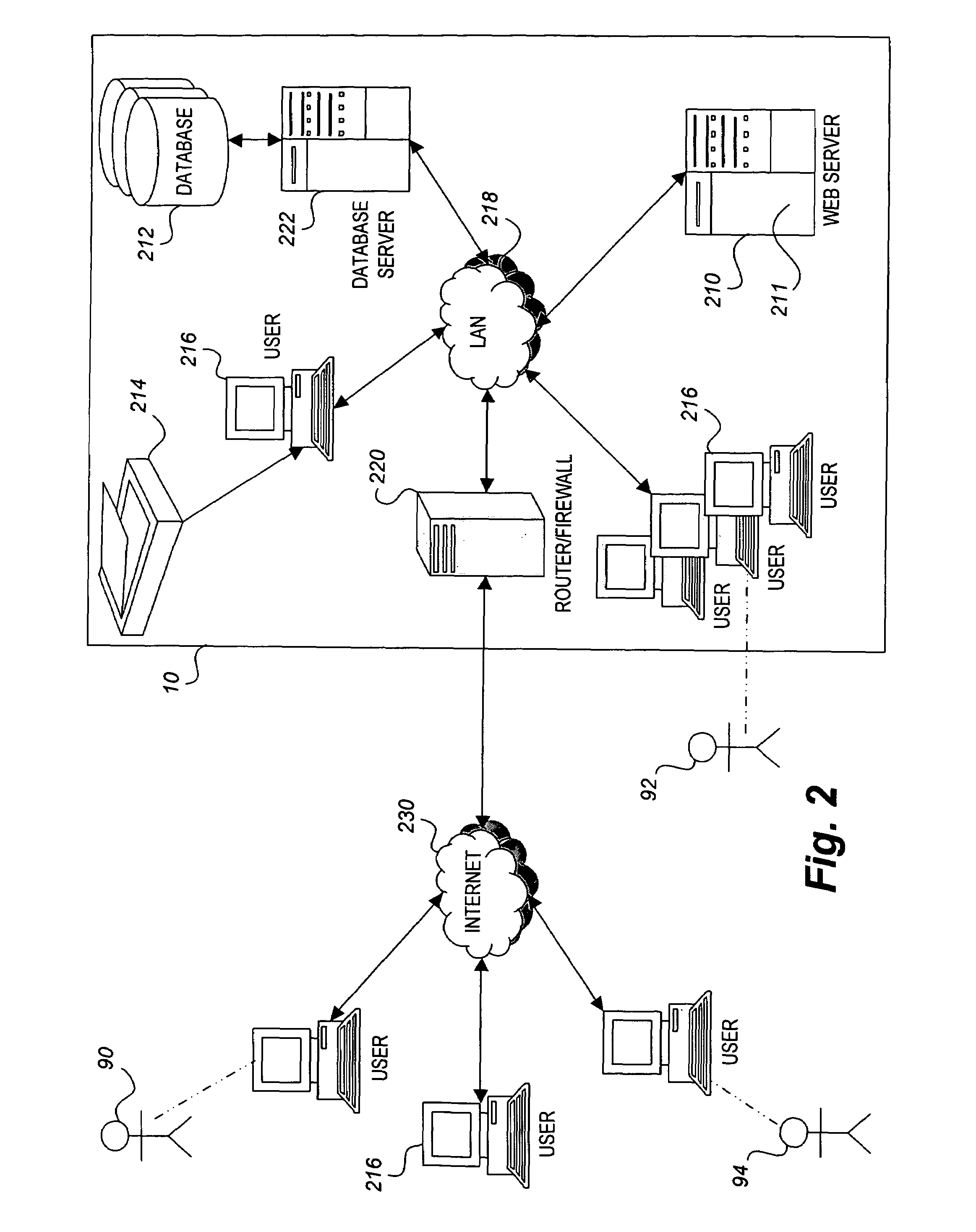Computerized system for automated completion of forms
a computerized system and automated technology, applied in document management systems, relational databases, instruments, etc., can solve the problems of not being able to map entry fields to appropriate entries in common fields database, automatic parsing of electronic forms, and not being able to automatically parse electronic forms, so as to achieve a greater degree of flexibility, moderate cost and complexity
- Summary
- Abstract
- Description
- Claims
- Application Information
AI Technical Summary
Benefits of technology
Problems solved by technology
Method used
Image
Examples
Embodiment Construction
[0041]The present invention is a computerized system for automated completion of forms that allows paper forms to be converted into, and saved in, an electronic image format for automatic completion from user data contained within a database.
[0042]Referring to FIG. 1, the computerized system for automated completion of forms 10 is characterized by the interaction of various users with the computerized system for automated completion of forms 10. The various users of the computerized system for automated completion of forms 10 include form providers 90, staff or administrative users 92, and form fillers 94.
[0043]Form providers 90 are users who have paper forms and wish to submit their paper form to be converted into an electronic form for use with the computerized system for automated completion of forms 10. Thus, the interaction of a form provider 90 with the computerized system for automated completion of forms 10 is represented as a “submit form” activity 102.
[0044]Staff or admini...
PUM
 Login to View More
Login to View More Abstract
Description
Claims
Application Information
 Login to View More
Login to View More - R&D
- Intellectual Property
- Life Sciences
- Materials
- Tech Scout
- Unparalleled Data Quality
- Higher Quality Content
- 60% Fewer Hallucinations
Browse by: Latest US Patents, China's latest patents, Technical Efficacy Thesaurus, Application Domain, Technology Topic, Popular Technical Reports.
© 2025 PatSnap. All rights reserved.Legal|Privacy policy|Modern Slavery Act Transparency Statement|Sitemap|About US| Contact US: help@patsnap.com



